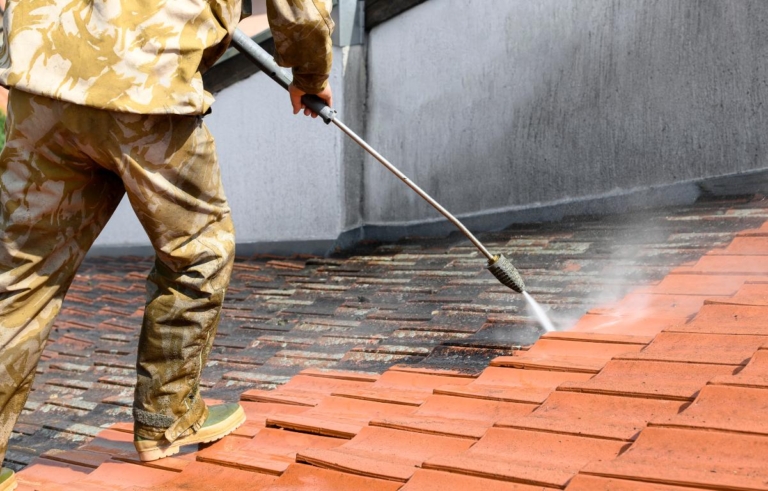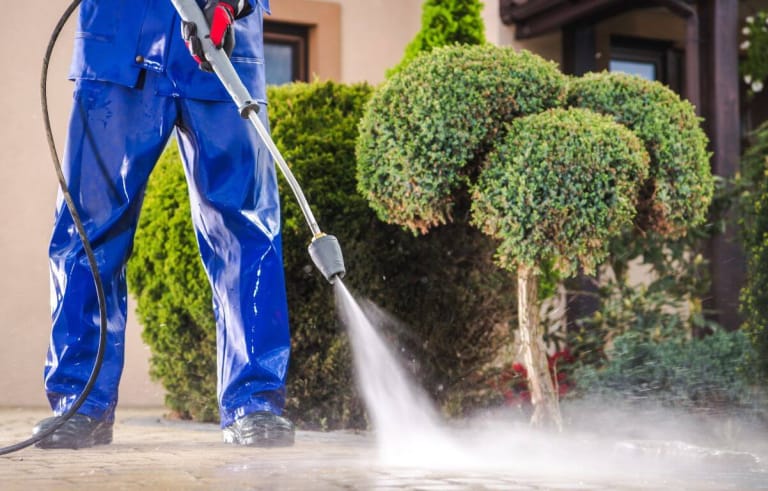Cleaning the facade may seem like a complicated process. And although the wrong approach can indeed result in no results or even destruction of the wall, such problems can be avoided. In our article, we explain how to prepare for the washing process, which facade cleaner will be the most suitable and how to avoid the most common mistakes.
From this article you will learn:
- How to prepare a building for facade cleaning;
- What is the significance of the type of facade from the cleaning point of view?
- What you will need to clean the facade;
- What mistakes can be made when cleaning facades?
Washing the exterior of a building requires a lot of knowledge and the use of specialist equipment and products. You can find a comprehensive guide on this topic on our blog: Washing exterior surfaces .
Facade washing – where to start?
Let’s start with the most important choice, which is the right day for washing. The day should be sunny and dry – in such weather, water will not stay on the surface for too long. Before starting to clean the facade, you must first prepare it for this process. The first step is to check the walls for cracks and other damage. If you notice any, repair them before starting cleaning. This will prevent the defects from getting worse. It is also worth securing windows and other elements that may be flooded with water and verifying that the power source for the washing equipment is properly connected.
Although most building owners remember to wash the facade, some forget that the roof also requires regular cleaning. How to do it? You will learn this from our guide: Roof Cleaning – How to Wash Your Roof Effectively and Safely? The Complete Guide .
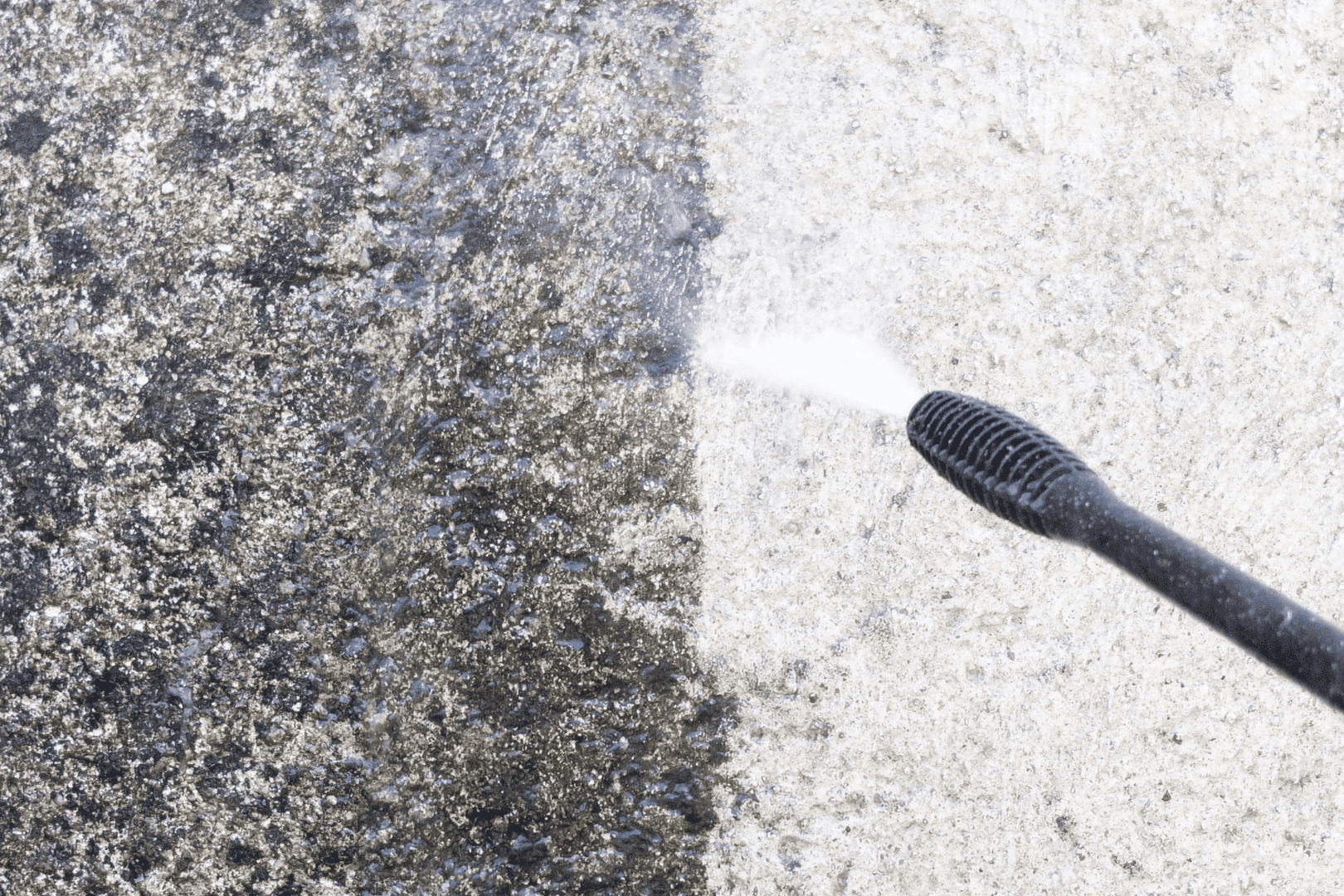
Types of facades and cleaning
Different facade materials require different cleaning methods. In order to maintain the aesthetic value and prevent damage to the facade, the appropriate technique should be selected. Mineral plaster facades, due to their porous structure, absorb dirt more quickly – in their case, more intensive washing will be necessary. Acrylic, silicone or silicate facades are less susceptible to dirt and are easier to clean. Stone or brick facades, on the other hand, require special care. Too much pressure during washing can damage these materials.
What equipment is needed to clean a facade?
To effectively clean the facade, you will need the right tools and equipment. In the case of taller buildings, it may be necessary to use a basket crane or a lift. Multi-storey buildings will require the intervention of employees with permissions to work at heights and use a safety system. Regardless of the number of storeys, a pressure washer will also be necessary. Devices of this type effectively remove dirt without the need for aggressive facade cleaning agents. If there is stubborn dirt on its surface, it is also recommended to purchase brushes with soft bristles, thanks to which you can clean the surface more thoroughly.
What products are recommended to be used to clean facades?
To wash the facade, use cleaning agents that will not damage the surface, while ensuring effective removal of dirt. They should be selected for the type of facade – different agents are intended for washing, for example, acrylic plasters, while others are intended for stone or brick facades.
For cleaning facades , Clinex S5 APC Out will be irreplaceable, as it will cope with the most difficult dirt. The agent is characterized by a high concentration of active ingredients and is very effective in removing various types of dirt – from those caused by atmospheric factors, through streaks and tarry deposits. Clinex S5 APC OUT can be used both for manual washing and using pressure washers and other specialist equipment. Remember, however, that before using any agent, it should always be tested on a less visible part of the facade.
The elevations are equipped with elements made of various materials. When cleaning, it is also worth taking care to wash them. In the case of plastic elements, such as window frames, it is recommended to reach for Clinex FastPlast .
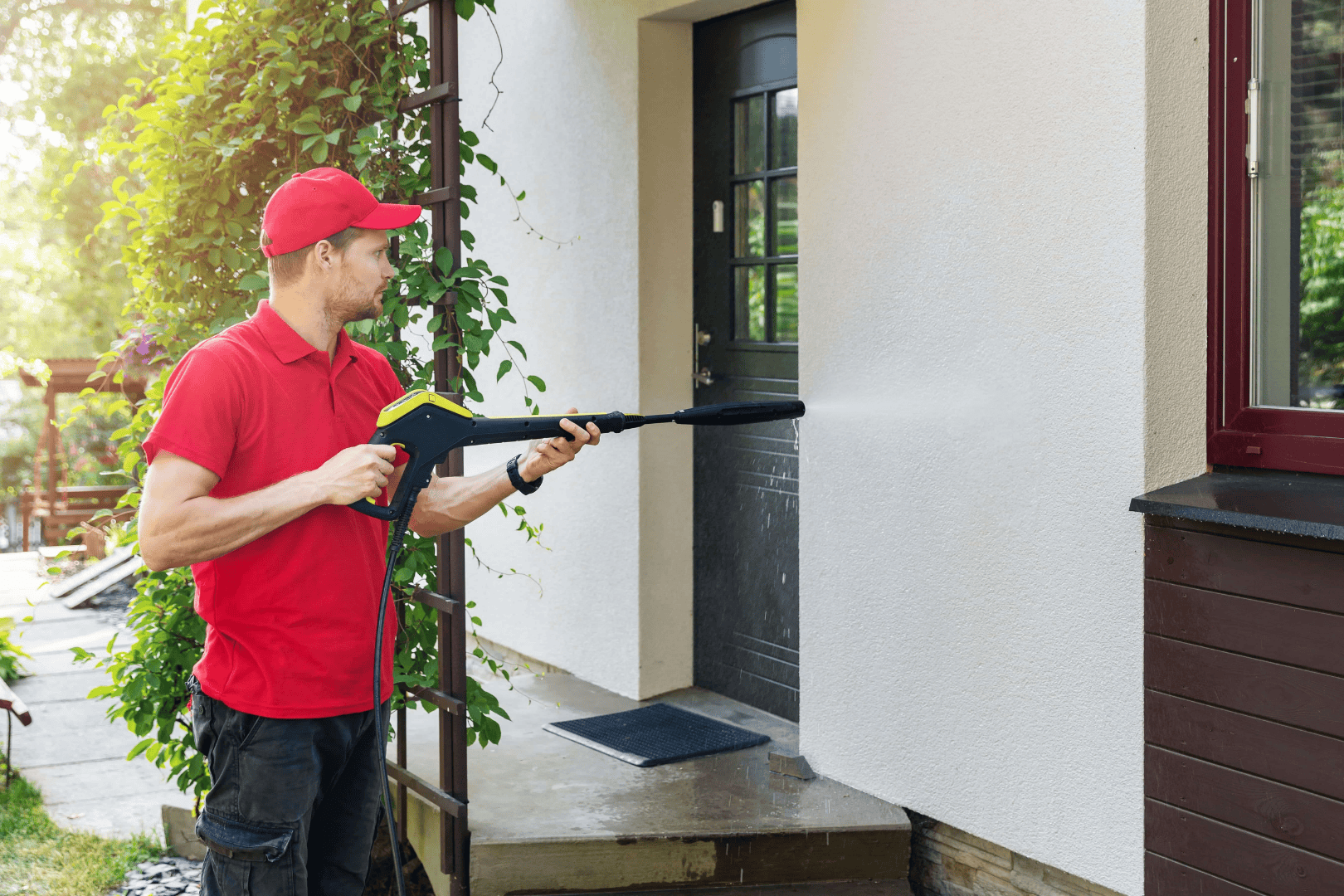
How to effectively wash a facade? Step-by-step instructions
To clean the facade we will need:
- an effective agent for removing difficult dirt, such as Clinex S5 APC OUT,
- pressure washer.
Step 1: Prepare the solution.
According to the manufacturer’s recommendations, we mix the cleaning agent with water. In the case of stubborn dirt, a higher concentration of the preparation can be used.
Step 2: Applying cleaner.
Apply the prepared solution evenly onto the façade using a foamer or sprayer.
Step 3: Running time.
We leave the agent for a few minutes so that it can effectively dissolve dirt and deposits. However, we must be careful not to let the agent dry out – it is best to wash the elevation in batches.
Step 4: Rinse.
We thoroughly rinse the facade with water under pressure, removing any residue of the cleaning agent and neutralizing the surface.
The most common mistakes when cleaning facades
It is easy to make mistakes when cleaning facades, which in extreme cases can even lead to damage. One of the most common mistakes is using too high pressure in the washer, which is particularly dangerous in the case of older facades. Another mistake is using the wrong liquid to clean the facade. Too aggressive active substances or preparations that are not suited to a specific surface can contribute to discoloration or cause other damage to the material. Intensive rubbing with a brush can, in turn, lead to scratching the surface. It is also worth remembering to protect windows, doors and other elements – especially those connected to the electrical network.
It is best to combine cleaning the facade with washing other external parts of the property – for example, the terrace. You can read about how to do it quickly, safely and effectively in our other article: Washing terraces – what and how to wash the terrace? If there is greasy dirt on the terrace or in the garden gazebo, reach for appropriate products, such as Clinex 4Dirt Foam .
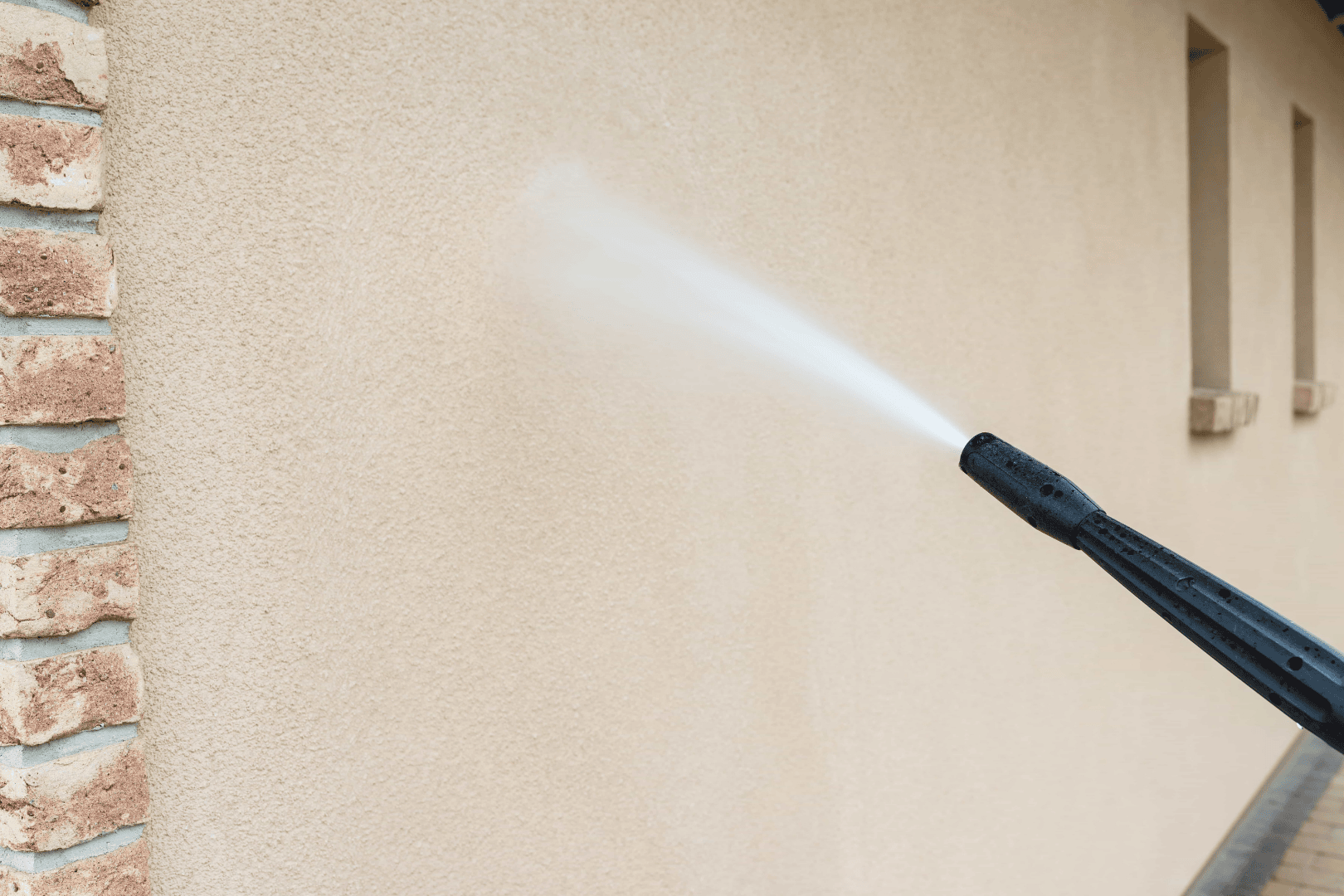
Why is it recommended to wash the facade?
It is recommended to clean the facades of buildings at least once every 3-4 years. Buildings located near busy roads or in areas with high air pollution require more frequent cleaning. The same applies to buildings with mineral plasters. It is not recommended to neglect this obligation. Regular care of the condition of the facade improves the appearance of the building and its resistance to harmful external factors – primarily moisture and microorganisms. This is especially important because fungi, mold and algae can negatively affect the quality of air and the health of residents. A clean facade also increases the value of the property, which is very important if you plan to sell or rent it.
In summary, washing the facade requires the right tools and professional facade cleaning products. It is also necessary to use the right techniques. With the advice in the above guide, achieving a perfect effect without the risk of damaging the building’s facade will be much easier.
FAQ – Frequently asked questions about facade cleaning :
Why is it recommended to clean the facade and how often should it be done?
Regular cleaning of the facade improves the aesthetics of the building and increases its resistance to moisture. It also prevents the growth of fungi and algae, which has a positive effect on the health of the residents. It is recommended to clean every 3-4 years, and in areas with high air pollution or with facades made of mineral plaster – more often.
How to choose facade cleaning products?
The cleaning agent should be matched to the type of facade. In addition to the standard preparation, it is also worth using products that effectively remove biological contamination.
What mistakes should you avoid when cleaning facades?
Do not use too high pressure in the washer – especially on older facades. It is also worth verifying whether the cleaning agents used are suitable, and testing each of them on an inconspicuous surface. Intensive scrubbing with a brush can lead to scratches. It is also important to protect windows and elements sensitive to moisture.


